Grana Chronograph – A War Veteran
Today I’d like to talk to you about a very special watch. For many reasons. To start with it’s a chronograph. In itself, this is not extraordinary but as you know we love chronos here. Whether it’s a Speedmaster, a Seiko 6139 or something completely different – like this one – we are up for it. You can call that special, I guess. It is also a vintage timepiece. Not only that but one that is coming from the 1940s, so 70+ years old. Then there’s its case, which is rather larger for the ’40s, at 38.4mm, 44mm from lug tip to lug tip. Finally, it is coming from a brand that is defunct, yet still alive. How can that be possible? Well, I’m talking about my vintage Grana (new Certina) chronograph from the Second World War that Hungarian Air Force pilots used at the time. Let me elaborate.
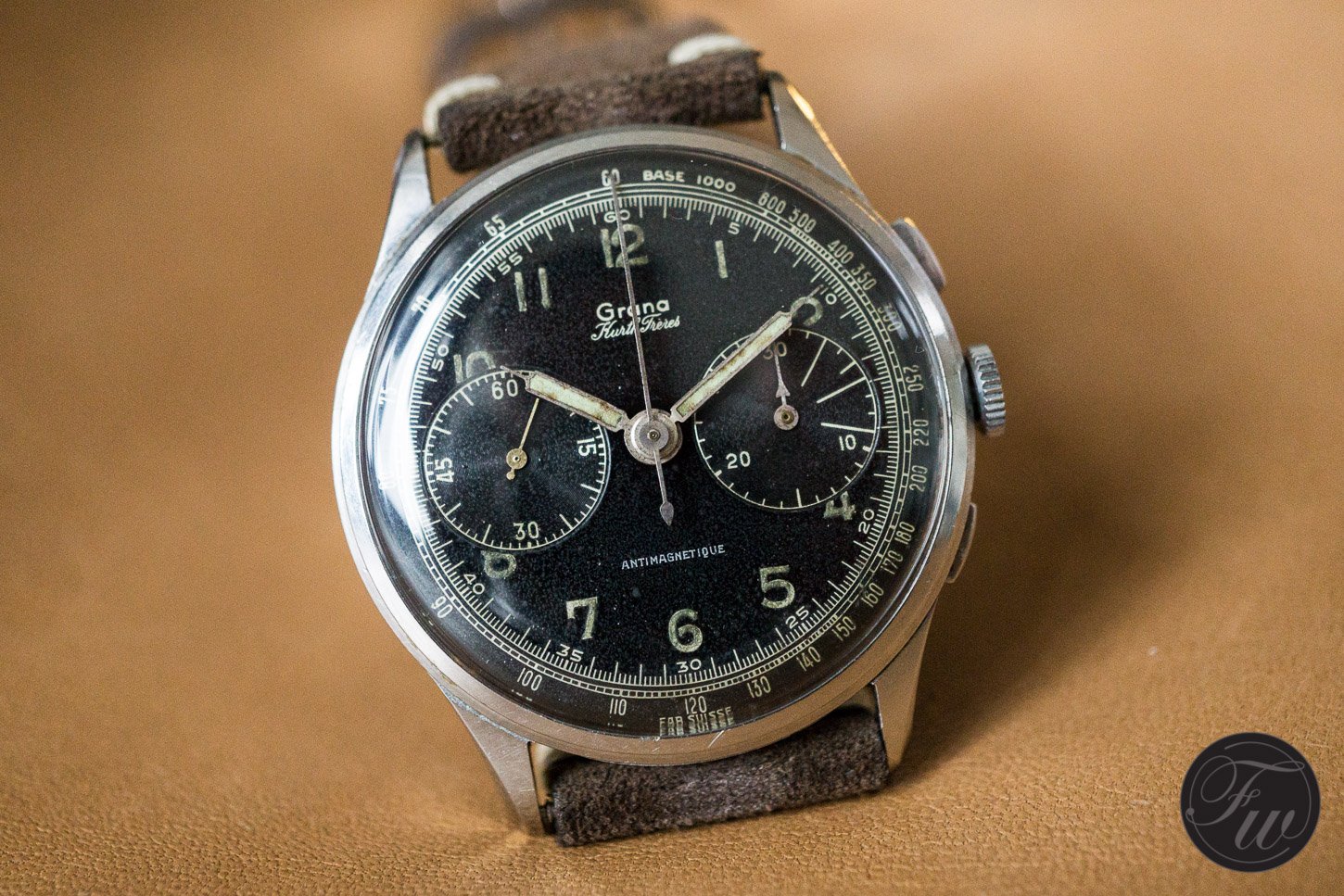
Grana chronograph
Grana was the predecessor of Certina. So, while the brand Grana is not in production anymore, Certina is alive and well. Grana came into existence in 1888 when the Kurth brothers, Adolf and Alfred, opened their watch production company in Grenchen, Switzerland. The first location was in the annex of their family home with only three employees. The business was booming towards the end of the 19th century, and they were soon able to move out of the family’s house and hire more help. While they produced movements and other supplies, it wasn’t until 1906 that the brothers made their first complete watch. This was also the year the name Grana was introduced to the market. The word derives from Granacus, the Latin name of Grenchen. The Kurth brothers (Kurth Fréres) marketed their watches as Grana with “Kurth Fréres” also on the dial in some cases.
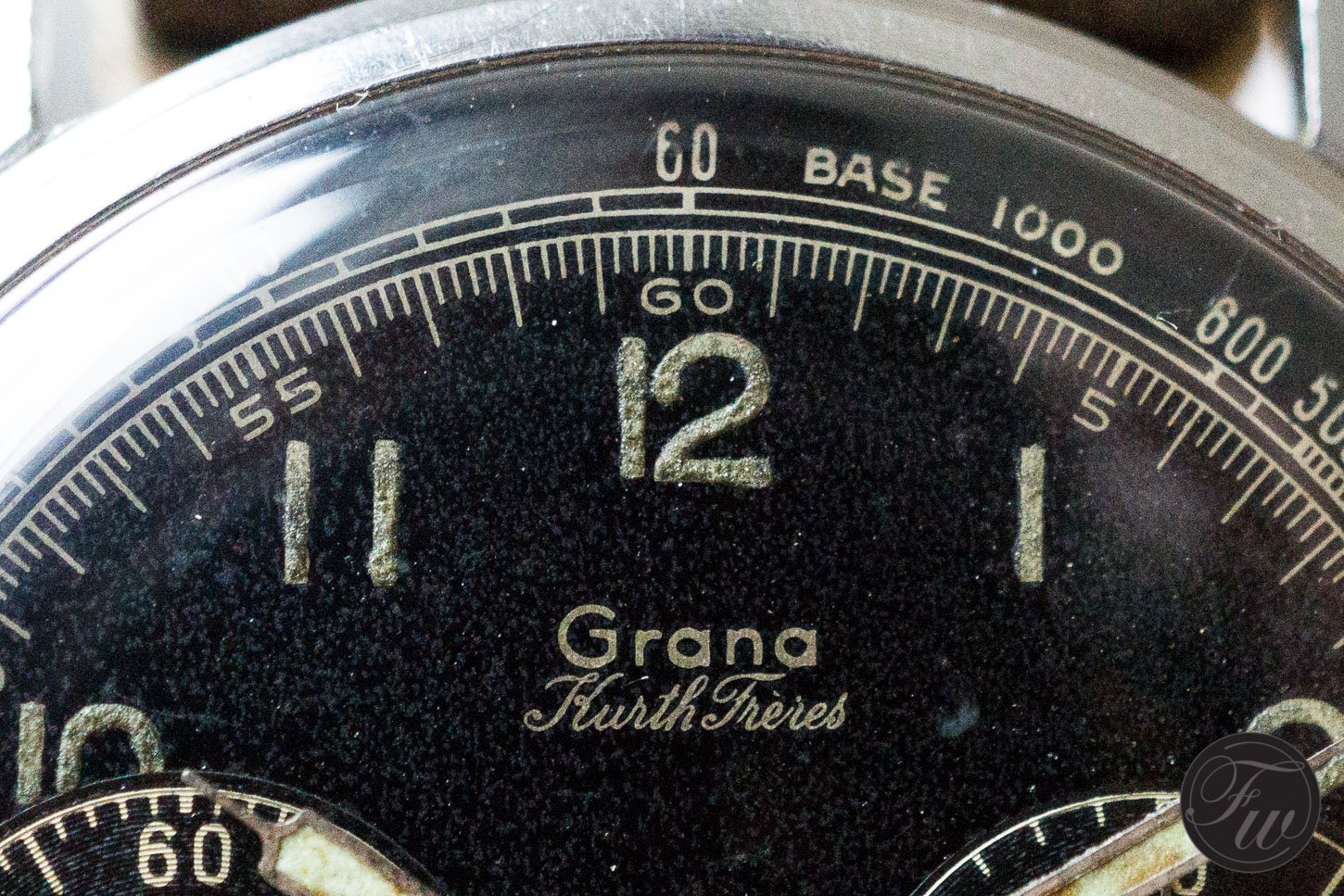
In the 1920’s Alfred’s 2 sons Erwin and Hans join the company. On the 15th of February 1924, Certina is registered at the Federal Office of Intellectual Property. From this point on more and more timepieces came out of the company under the name Certina. In 1938 the, then still, Grana watch company celebrates its 50th anniversary. A year later the company officially registers Certina as the name of the brand. There are contradictory dates regarding when the company stopped using the name Grana and started to market the watches solely as Certina but I guess it was rather a transitional period of a few years. Still, it had to be somewhere around the early to mid-1940s. One thing is for sure, during the 2nd World War the Hungarian Air Force (Royal Hungarian Air Force at the time) issued these timepieces to their personnel.
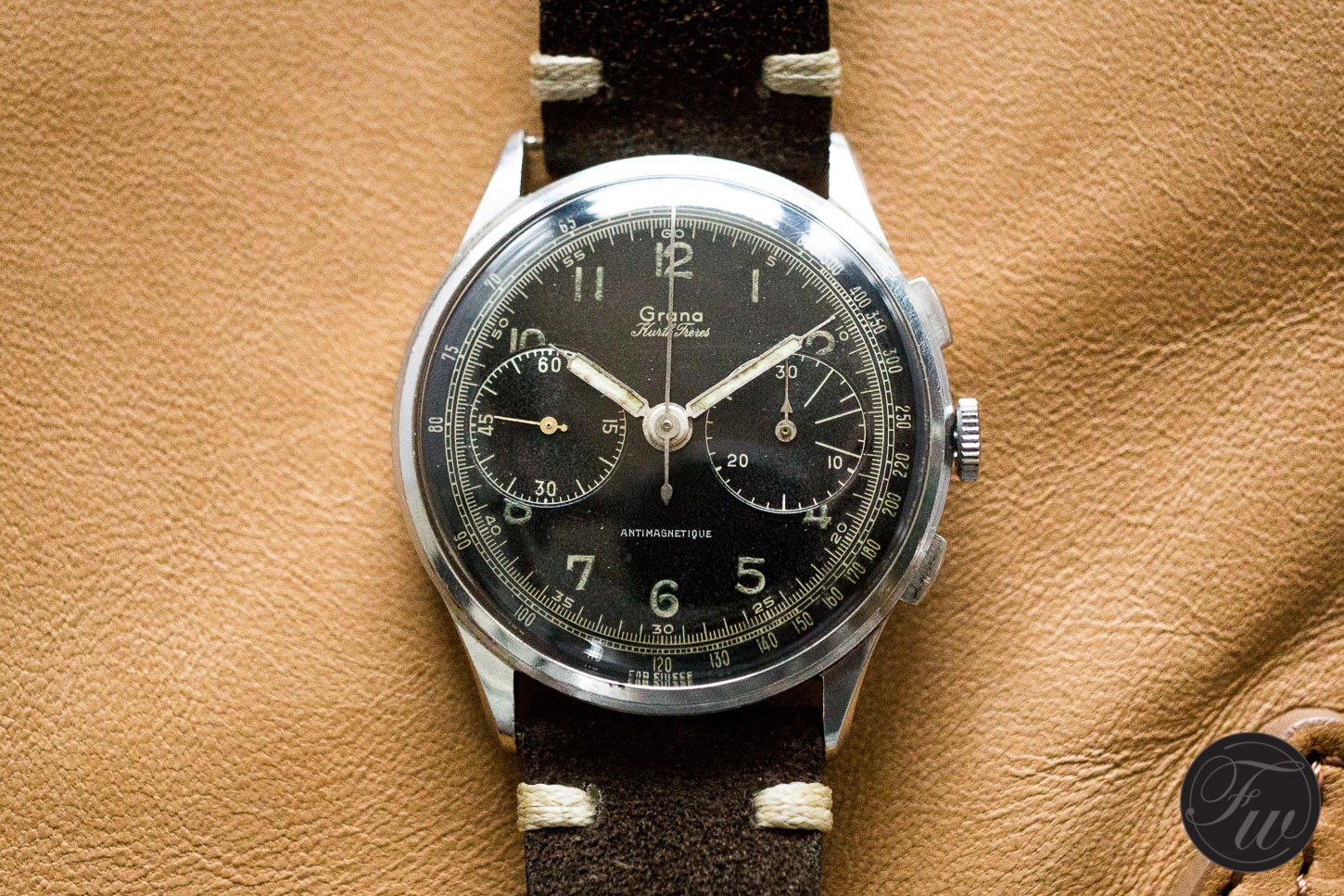
The watch
I already mentioned a few things about the watch in the foreword but let me elaborate on it a bit more. The case of the watch is a whopping 38.4mm – especially large for the ‘40s. Needless to say, we are talking about front-engine-planes with only a few instruments on the board, so a chronograph watch was not only necessary but crucial in this case. For a huge diameter, the Grana chronograph is pretty slim at only 12.2mm. The large round case had short lugs with minimal bevelling. The decoration was not the number one priority. The crown is big enough that the pilots could wind the watch with the gloves on. Long flat square pushers operate the chronograph function. The crystal is acrylic of course and the case back is press-in. It has a special inscription; “Honv. Légierők Tulajdona” which translates roughly to “Property of Hungarian Air Force”.
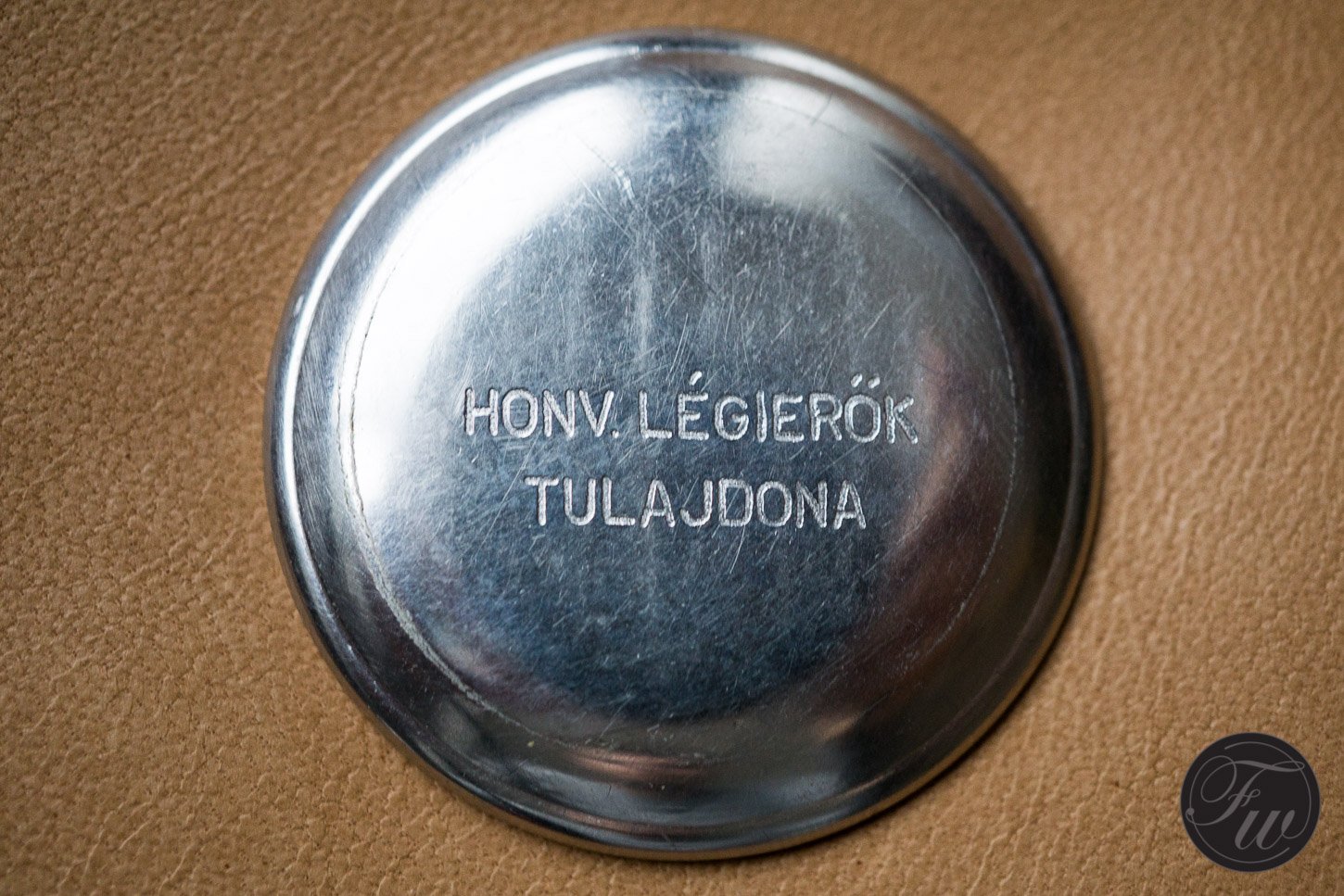
While the lugs have no drilled-holes every model that I came across and has been in the air force has one special feature. The holes for the spring bars are converted from female to male. They achieved it by welding a small piece of a brass rod into all 4 holes. They then used female spring bars, technically making the watch a fixed spring bar case. A long, nato-like leather strap went under these bars, long enough that the pilot could strap it around his flight jacket. Also, many examples have asymmetrical lug widths, meaning one width is 20.3mm while the other is 21.1. The outside of the case back has no marking – other than the inscription – the inside has the 4-digit serial number only. My Grana chronograph is a very comfortable watch due to its wide but thin case. It has a perfect contemporary feel on the wrist.
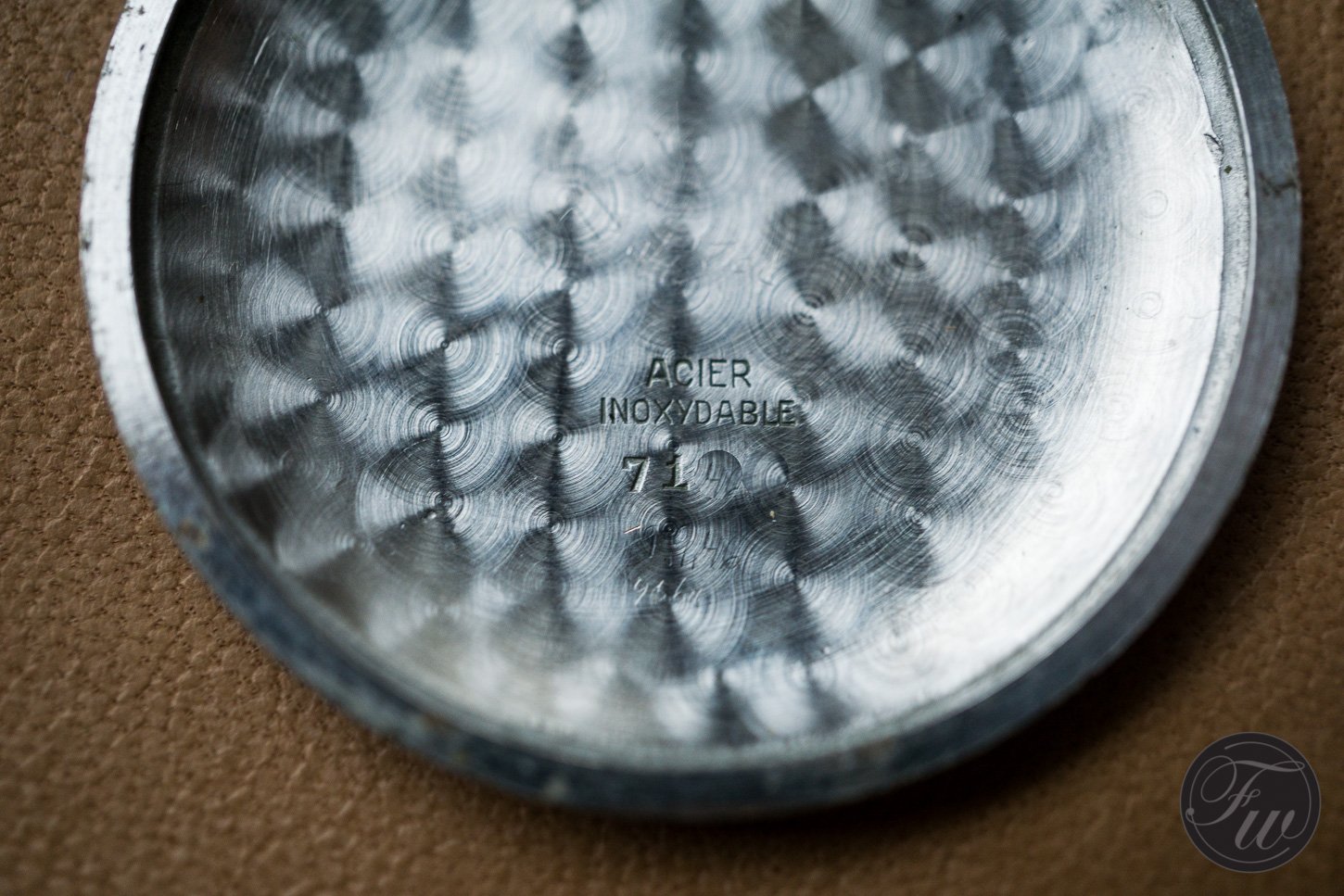
Gilt
The face of these vintage Grana chronographs is black gilt with large numerals. Though I have come across examples where the dial is white the majority I have seen (and I’ve handled a good dozen) had black dials. A beautiful patinated gilt cover on all of them with large radium numbers. Since it’s a bicompax other than numbers 3 and 9 every numeral is visible fully or partly. The bezel, as you usually have with watches from this era, is painted around the rim of the dial. The 3 o’clock subdial is a 30-second counter, the 9 o’clock one is the continuous-seconds dial. The brand name, “Grana” with “Kurth Fréres” under it is just below the 12 in yellow/gold color just like the rest of the paint. Over the 6 you can find the word “Antimagnetique” referring to the movement. A useful feature for a filed watch.
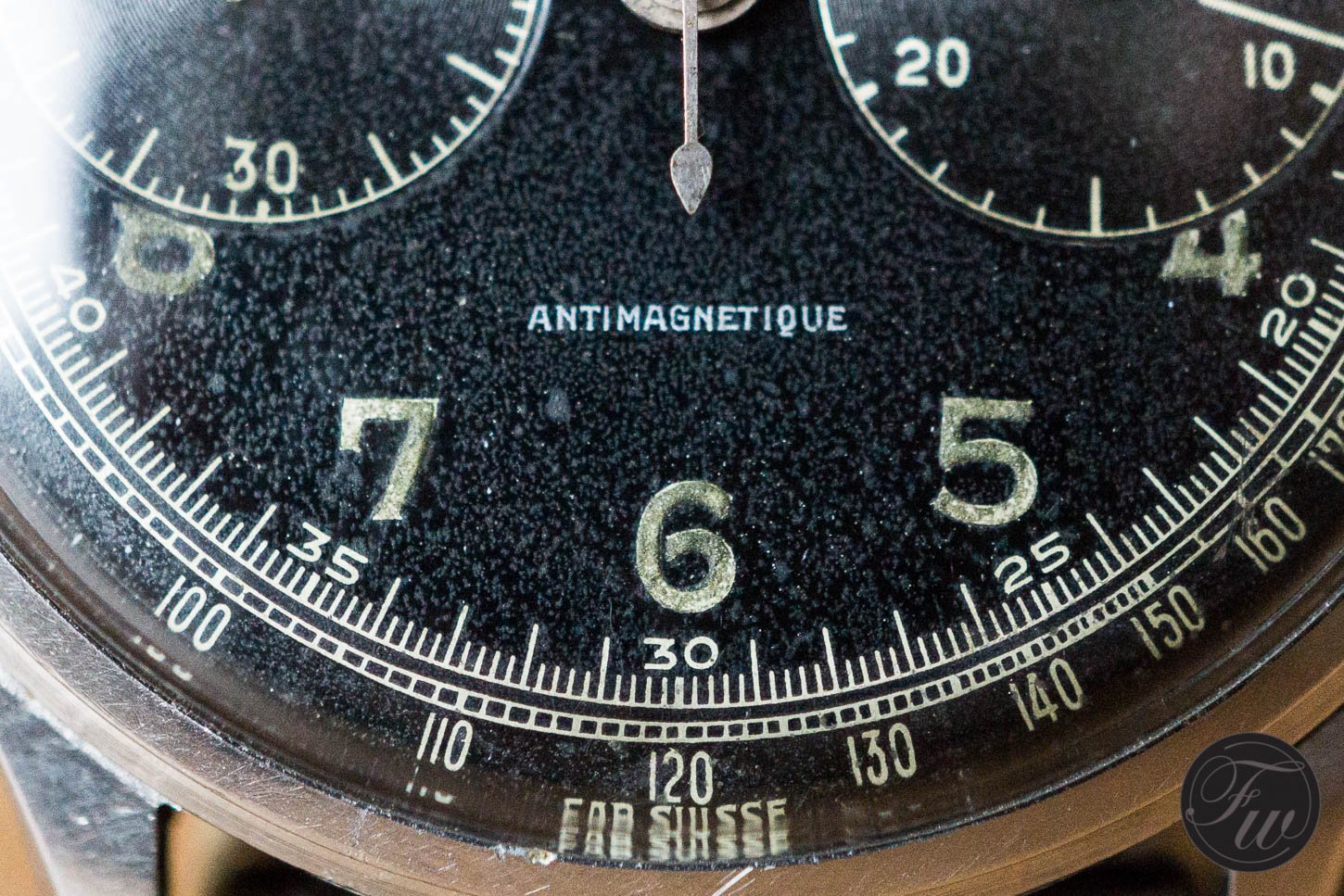
Venus 175
Inside my Grana chronograph is a Venus 175 movement. It is a very fine 17-Jewel column-wheel chronograph caliber. With 18.000 A/h and around 45 hours of power reserve, it was an advance movement of its times. Not to mention that it’s antimagnetic. Venus movements were extremely popular back in the day for their accuracy and reliability. The one brand that most of us (or at least I) associate Venus with is Breitling. Though other companies such as Tissot, Gallet, or Arsa also used Venus calibers at one point. Venus produces the 175 in the ’40s and 50’s however hence the name Grana was probably not around in the mid-’40s anymore it’s safe to assume that these watches went for cheap to clear the stock. The air force often acquired watches like this later on. They bought timepieces that were 10-12 years old so cheap but still great quality.

Further information
While the last part is speculation, I have seen this with other watches the air force acquired in the early or mid-’50s. Either way, these timepieces definitely served during the war, which was their last combat. In the early 1950s a new chronograph took over and the Granas slowly disappeared from the air force. All in all, Grana is not among the most known or sought-after vintage watches. You can rarely find a vintage Grana chronograph and if you do, that is usually the smaller 35.5mm version. Funnily enough, in 2016 Phillips auctioned a special Grana split-second chronograph that has the same design features as mine, for 86.250 CHF. A vintage Grana chronograph like mine clearly does not command such prices. Though some vintage watch dealers (speculators) would like to hype the value as much as possible. I guess it’s a question of supply and demand.
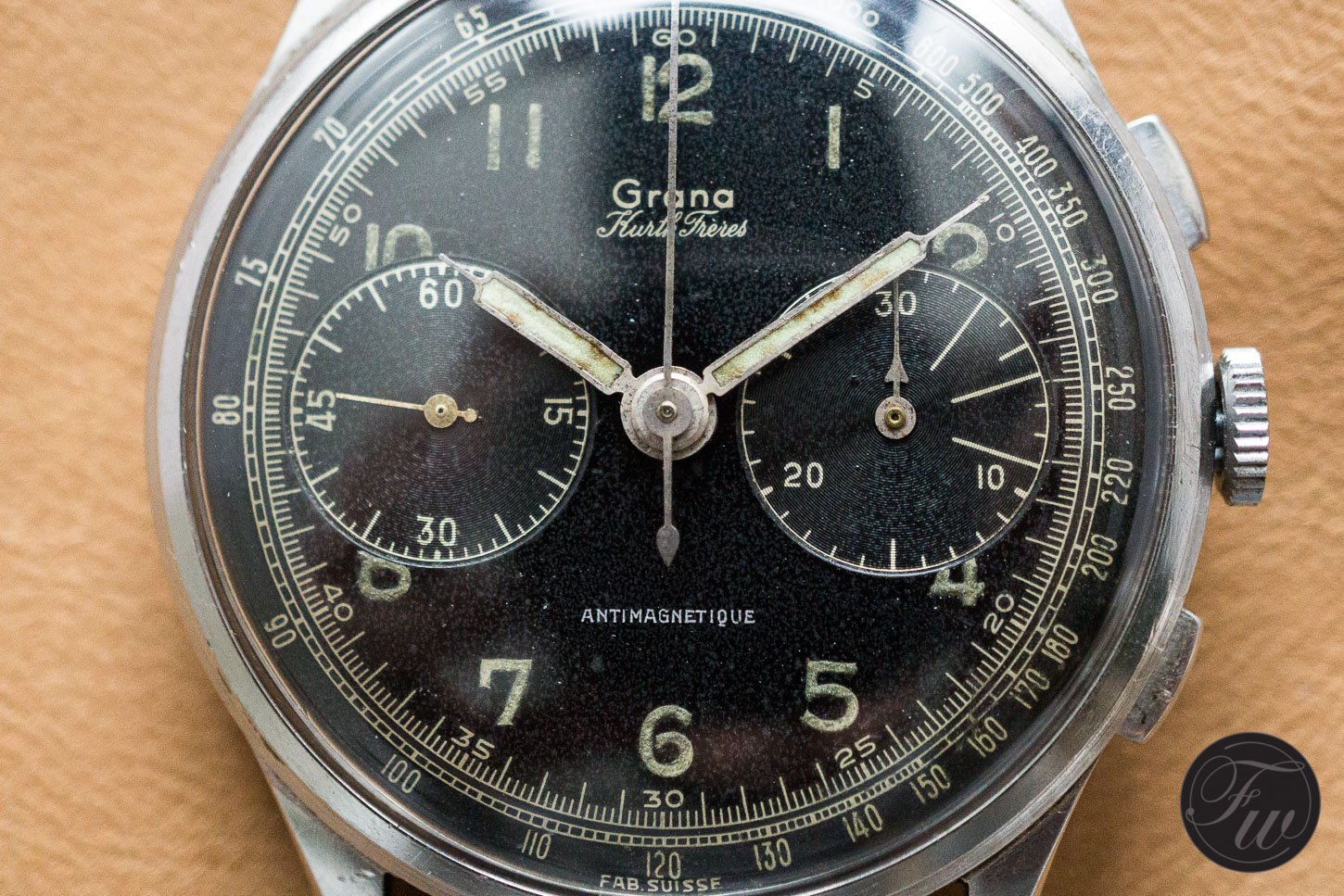
They are clearly hard to come by due to their age and the fact that they actually were in many battles. The air force suffered tremendous losses during the war and even before that the numbers were not even close to the Allied Forces or the Luftwaffe for that matter. We’re talking a few hundred at best. The prices I have seen these Granas go for are around the €2.000-2.500 or so subject to condition. My Grana chronograph does not get as much wrist time as it should, perhaps I’m worrying about it too much. Even after so many years it still works great (fingers crossed) the chronograph starts, stops, and resets as it should. If you like vintage chronographs and have the chance to pick one up, don’t hesitate. If you have one, on the other hand, hold on to it. Or send me an email 🙂










